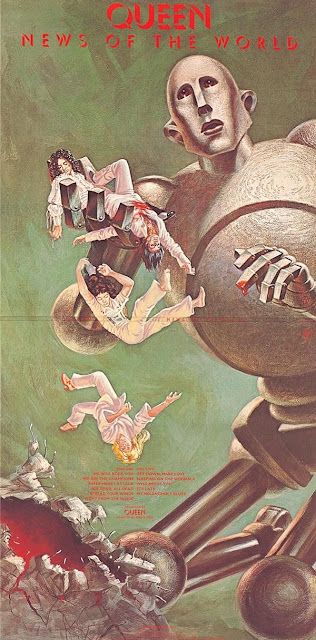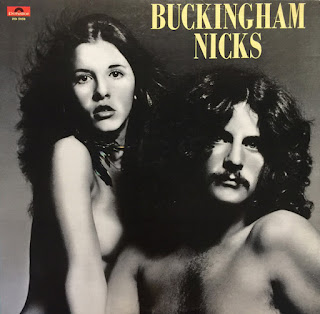By Chastity Morgan
My favorite book is Shantaram by David Gregory Roberts. The events in the book are real, so Roberts says. But he has been called into question concerning his authenticity. Shantaram reminds me of my Uncle Larry and the movie Big Fish. It is easy to be skeptical of the tall tales different characters tell, and it is even easier to dismiss people as liars when their lives do not necessarily align with the clearly delineated moral compass that we tell ourselves exists. We all have secrets. We all have beauty. We all have talents. We all have darkness. If we take the time to listen, we hear the truth, the beauty, the complexity, and the difficult choices people are forced to make and reconcile with until the last breath they take. However, all too often, we become too focused on pointing out the inconsistencies to either make other people appear foolish or discredit their words, which in essence discredits their character as a whole, even the beautiful parts.
My favorite quote in the book is, “Fate gives all of us three teachers, three friends, three enemies, and three great loves in our lives. But these twelve are always disguised, and we can never know which one is which until we’ve loved them, left them, or fought them.” Nearly every encounter I have with someone, I try to compartmentalize them into one of these four categories. I don’t know if this is a good thing or a bad thing, or maybe it is just a thing. Overtime, the veil of people unshrouds. Those who I thought were my loves were my teachers, my friends were my enemies, and my enemies were really my loves. Some people do not fit neatly into just one category.
The individuals who I think most about are the strangers who shared their stories with me in fleeting encounters. I call these strangers my best friends because we had a special bond at that moment in time. We did not know each other long enough to develop animosity or anger. I did not know their ugliness and they did not know mine. We were simply two strangers looking for someone who was willing to listen to our stories and share what life has taught us.
This is my ode to my best friends and the lessons they taught me.
The Homeless Guy at the Bus Stop in San Francisco
I was waiting for the bus downtown, sometime in the early 2000s, when a gentleman came up to me randomly. We made small talk about the day, the weather, and where we were taking the bus to. He told me his feelings about being homeless. For him, homelessness brought overwhelming loneliness. The invisibility associated with being homeless hurt his soul. He reminded me that there are a lot of lonely people in the world. This still seems odd given the billions of people that exist.
The Homeless Woman on the Greyhound
On one of many Greyhound trips from Arcata to San Francisco, I had the privilege of sitting next to a homeless woman. This was when a roundtrip Greyhound ticket from Eureka to San Francisco was $60, there were two buses a day, and you just had to get there early enough to make sure you were able to get a seat on the bus. The woman had just given birth to a baby boy in Eureka twenty-four hours earlier. She never held her child because she did not want to. Instead, she gave birth, left the hospital, and caught a one-way Greyhound to San Francisco where she could at least be part of a community living on the streets. She spoke about her love for her child being so big, that she made the difficult choice to give him up. She knew deep down that she could never give him the life she believed he deserved, and she hoped that whoever he ended up with loved him as much as she did. She reminded me that love is not always doing what is best for ourselves, but for others.
The Woman Going to Vegas for the Dance Competition
It may have been 2014, and I was on a flight from Salt Lake City to Las Vegas for the tradition that needs to die, a Hen Night, commonly referred to as a Bachelorette Party. I was sitting next to a woman in her late 20s who was headed to Vegas to compete in a tribal dance competition. She was telling me about her recent heartbreak with her high school sweetheart. They were childhood friends on the reservation, and married when they turned 18. The two enjoyed 10 years of marriage then they realized they outgrew each other. To no one’s fault, they decided to divorce. She was talking about the heartbreak associated with coming to the realization that the person who, at one time, she loved more than the world was no longer the same person, but neither was she. She spoke about the feeling of overwhelming sadness where the grief felt too big to handle. When she felt this way, she would do what her mother suggested, she would lie in the grass, touching each individual blade. She would give her sadness to the grass because while it felt too heavy for her, it was not too heavy for the grass to carry. She reminded me that the universe is always there to take away our sorrows.
The Guy Who Just Served 10 Years in Prison
One thing about California is that it has a huge prison system. It is not uncommon to see just released prisoners from Pelican Bay in Crescent City or San Quentin in Marin County on the trains and the Greyhounds. They are usually easy to spot with their crisp white t-shirt, white tennies, clear bag of random goods, and intense eye contact. In 2003, I was taking a late-night Greyhound from San Francisco to Santa Ynez in Southern California. The bus had a stop in Bakersfield, which is the closest Greyhound for Kern Valley State Prison. The bus was near empty, so I closed my eyes to get some sleep, but I immediately woke up to the sound of a stare and the smell of a Snickers bar. My eyes opened to see a bald man in a crisp white t-shirt sitting on the seat next to me.
The bald man immediately said, “I just got out of prison.” Then he showed me his prison badge and said, “This is what I looked like when I went in. I needed a break.” On his badge was a picture of him about 30 pounds skinnier with an emaciated methamphetamine look. He was going home to his mother after 10 years in prison on a second-strike drug offense for possession of cocaine. He proceeded to tell me how he ended up in prison for an empty baggie with cocaine residue on it. He went to a hotel room with an 8 ball, waiting for hours for a lady friend to arrive. By the time she arrived, the drugs were gone. He left the hotel room with the empty baggie still in his pocket, and an angry woman on his tail. He walked two blocks, before a police officer did a “random” stop and search. It was 1993, and he already had a record for drug possession, so he was given an excessive sentence for less than 3.5 ounces of cocaine. While he was incarcerated, he spoke about how he was grateful to have the opportunity to get sober, and he hoped to stay sober. He reminded me that sometimes people need a first chance.
The Woman from the Commune
While I was living in Northern California, Humboldt County had an exodus of 20-something year olds who were called the Farm Kids. I had a boyfriend from The Farm, who in an act of rebellion from his vegan upbringing, developed an unsatiable appetite for cheeseburgers. The Farm is a commune in Tennessee, started by Stephen Gaskin in 1971. Toted as a spiritual haven, it was also a place for a hippie lifestyle to exist. Humboldt also had their own “communes.” There was the “Salmon House,” which was notoriously referred to as the hippie commune house. People would also start their own small communes in the forest, or on a person’s plot of land somewhere in the hills.
In 2002, I was on the Greyhound from Arcata to San Francisco and I sat next to this younger woman in her mid to late 20s wearing a teddy bear backpack. She just quit her job at the Tip Top Gentleman’s Club in Eureka, and she was moving to Ukiah where she bought a piece of land with her boyfriend, her ex-boyfriend and his new girlfriend, her mother and her mother’s new husband, her father and her father’s new wife, and the same setup on the boyfriend’s side. To elaborate it was, his ex-girlfriend and her new boyfriend, his mother and her new husband, and his father and his new wife. She told me about the communal living style they wanted, which would be off the grid and completely sustainable. I could not get past the new and former relationships of the living arrangement, but according to her, they were all the best of friends. I strongly admire(d) the lack of ego and jealousy of the whole dynamic.
She took a turn with the conversation and she lifted up her shirt to show me the scarification on her chest, which was an autopsy scar. She got a kick out of the thought that somebody would one day perform an autopsy on her, and she would already have the scar. She reminded me to not give two-fucks.
A Fish Named Wanda
Wanda is a little different than the others. She was a fixture through my high school years. While I knew her, I did not know her that well. Wanda was beautiful. She used to sell her jewelry on the weekends on Market Street in San Francisco. She was houseless for the most part, but eventually secured a houseboat that she parked in the Bay. Wanda would make this really cool wrap jewelry out of wire, stones, and sea glass. I would scavenge the beach and collect sea glass pieces and bring them to her. I would buy her jewelry too, but if I felt like my style changed, I would give it back to her and she would sell it again. One year, I hadn’t seen her for months and then, one weekend, she was there but her jewelry was a little more polished and refined. I remember her saying, “No one litters anymore.” She was pissed because she could not find any sea glass at the beach. She would commiserate about how the city was changing and she could see the changes because no one wanted her self-proclaimed hippie jewelry. She was “forced” to use sterling silver wire instead of pewter, and tumbled beads and stones, instead of the recycled material with the rough edges because, according to Wanda, it is what the people wanted. Wanda passed away in 2003 from a heroin overdose. I wonder what she thinks the San Francisco style would be like today. She reminded me that we are not defined solely by our perceived vices.
I am grateful to these individuals who shared their lives, lessons, hopes, and sorrows. I hope that they are grateful to me too, for listening.



